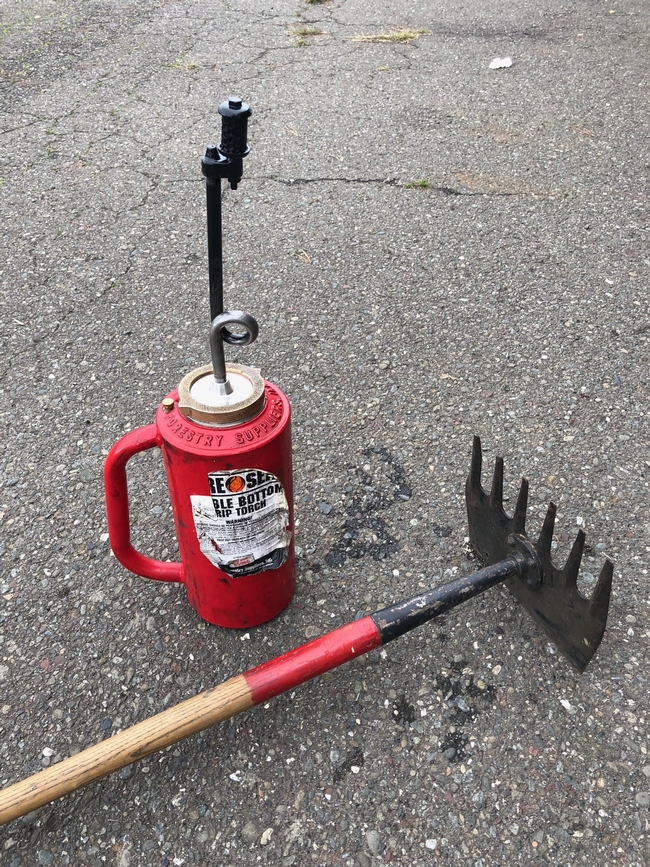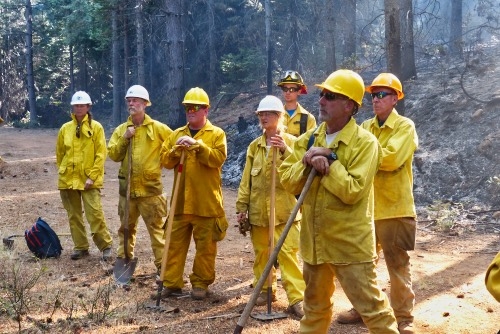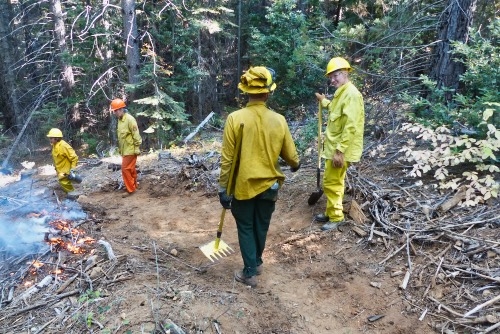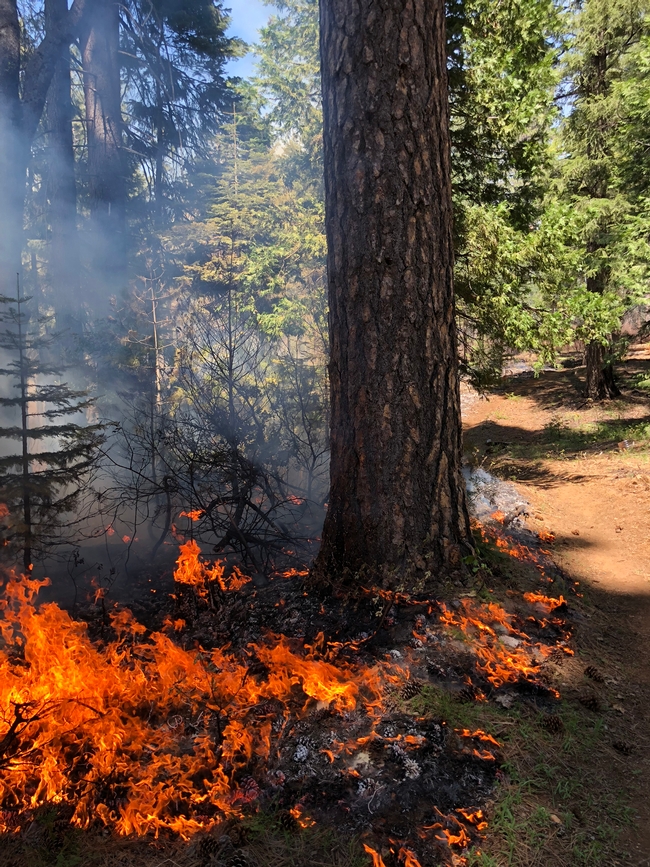Can rakes save forests? Yes, as long as you have a drip torch in the other hand
The humble rake has been in the spotlight in recent weeks, and its role as a forest management tool ridiculed and scorned. However, most fire professionals believe rakes are a necessary part of saving California's forests.
Those who are familiar with fire are undoubtedly familiar with the McLeod, which is a standard firefighting tool and … it is essentially a rake (one side is a rake with coarse tines and the other side has a flat sharpened hoe). The McLeod was created in 1905 by a U.S. Forest Service ranger who wanted a single tool that could rake fire lines (with the teeth) and cut branches and roots (with the sharpened hoe edge). The McCleod is used to scrape fuels off of a fire line, preventing fire spread. The use of hand tools like the McLeod continues to be one of the standard ways that wildfires are stopped (although often aided by the rake's bigger and more powerful cousin: the bulldozer).
While the McLeod is a fire-fighting tool, it is also an essential fire-managing tool. When conducting controlled burns (i.e., purposeful fire), the fire is contained within desired areas by diligent raking with McLeods and other hand tools. These tools are necessary for conducting controlled burns.
While it isn't feasible to reduce fire risk by raking the forest with hand tools, if you hold a drip torch in the other hand, you could get the work done.
A drip torch consists of a canister for holding fuel that comes out of a spout (with a loop to prevent fire from entering the fuel canister) and a wick from which flaming fuel is dropped to the ground when the wick is ignited. The drip torch is the most common tool for lighting prescribed burns, which can be used to remove excess fuel buildup in the forest.
In a forest setting, these two tools — the rake and the torch — must be used together. Without a rake, the fire is not easily contained. And without a drip torch, the fuel that was raked cannot burn. Of course, prescribed burns rely on a number of other pre-specified factors (the prescription), including wind, temperature and humidity.
Using fire in a controlled manner drastically reduces the impacts of wildfire in a forest. Typically flames are kept low and most or all of the trees survive the fire, while much of the dead material on the forest floor (the “fuel”) is consumed. This reduces the risk of the forest burning at high severity in the future, thereby protecting nearby homes and towns. It also reintroduces fire as an important ecosystem process, which improves the health and biodiversity of forests and maintains the ecosystem services they provide, including wildlife habitat, water filtration and carbon sequestration.
Use of a rake and a drip torch together could make a great difference for reducing the impacts of wildfire in California and the West. The National Interagency Fire Center reported that during 2017, only half a million acres were treated with prescribed fire in the West, while 7.4 million acres (almost 15 times more) burned in wildfires. In the Southeastern U.S., where there is a long-standing tradition of prescribed burning, only 2 million acres burned in wildfires while over 5.5 million were burned using prescribed fire.
This was not always the case. Use of prescribed fire, or ‘light burning,' was once common in California until it was outlawed by federal and state policy in 1924. Although the merits of expanding its use are widely known and appreciated, it has been very difficult to do because of concerns about air quality, liability and lack of skilled burners. One of the biggest constraints is that we have very few people who have experience with ‘good fire' and very few qualified people who know how to safely burn.
As foresters and educators for the University of California Cooperative Extension, we are working to expand the use of prescribed fire on private forest and grasslands in California. Central to our efforts are educational events that give people an opportunity to experience prescribed fire first-hand. In the last two years, we have hosted workshops throughout northern California, and many of our workshops have included a live-fire component where landowners and other community members can try their hand at prescribed burning, under the direction and guidance of more experienced burners.
Our efforts in California are inspired by approaches in other parts of the country, including “Learn and Burn” events in the Southeast, prescribed burn associations in the Great Plains, and prescribed fire training exchanges (TREXs), an innovative training model developed by The Nature Conservancy's Fire Learning Network. All of these efforts have a focus on reconnecting people with fire, and they give participants the skills and experience needed to put fire back in the management toolbox.
We hope that by empowering people to pick up the drip torch (and the rake) on their own properties, we can help them reduce the risk of wildfire and improve the health of their forest and range lands. There is no time to waste.
Comments:
- Susie





Posted by Michael Richards on April 18, 2022 at 12:00 AM